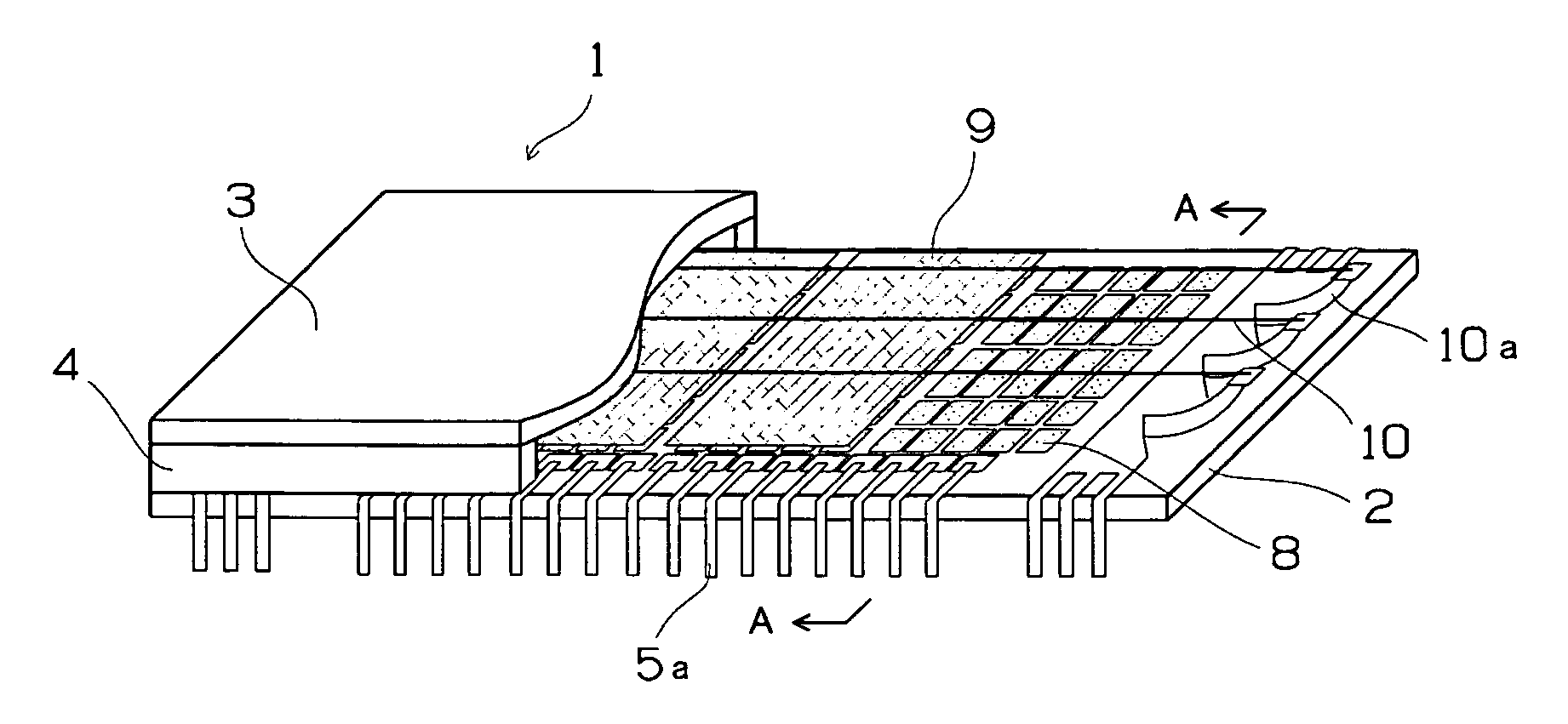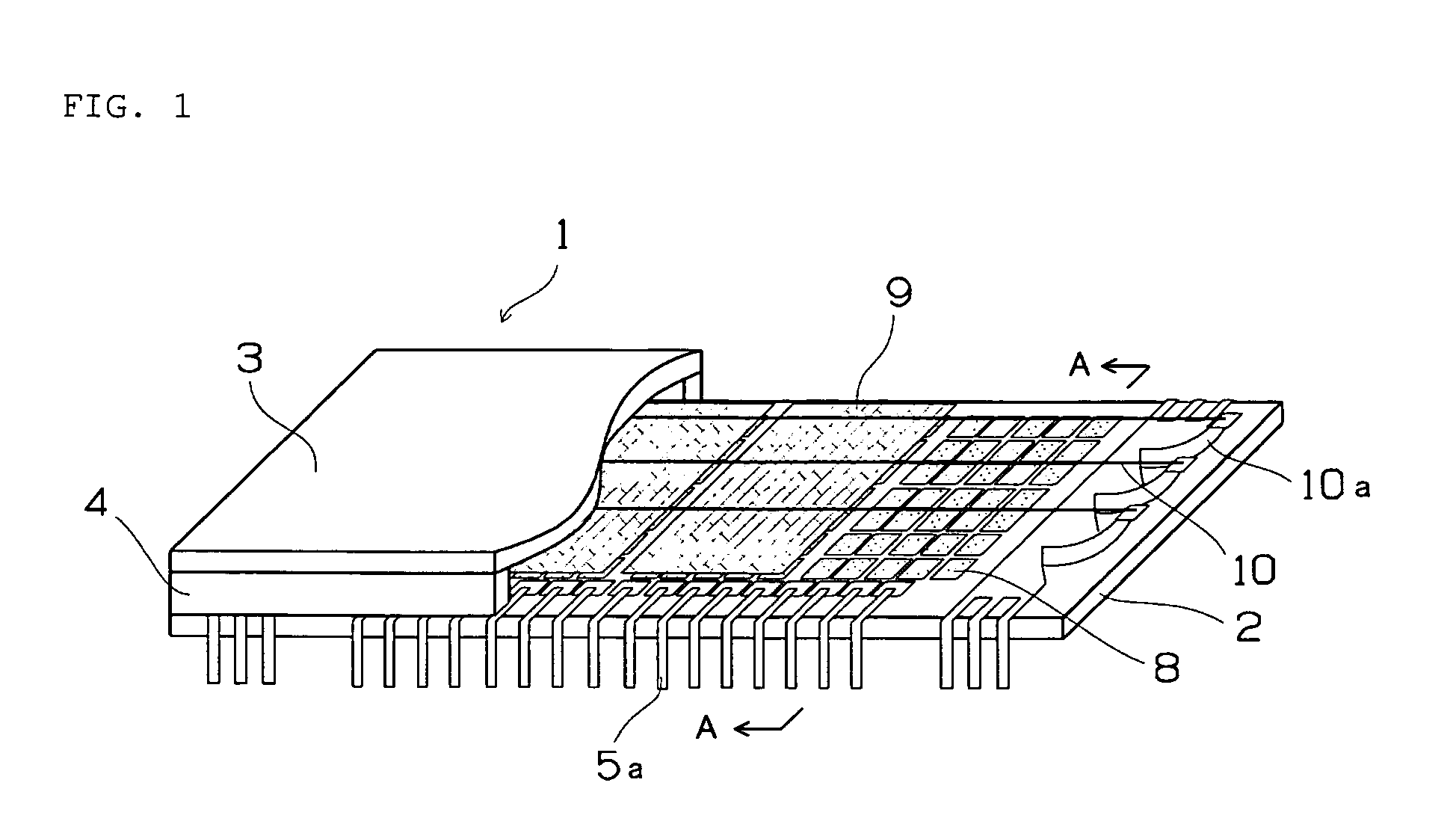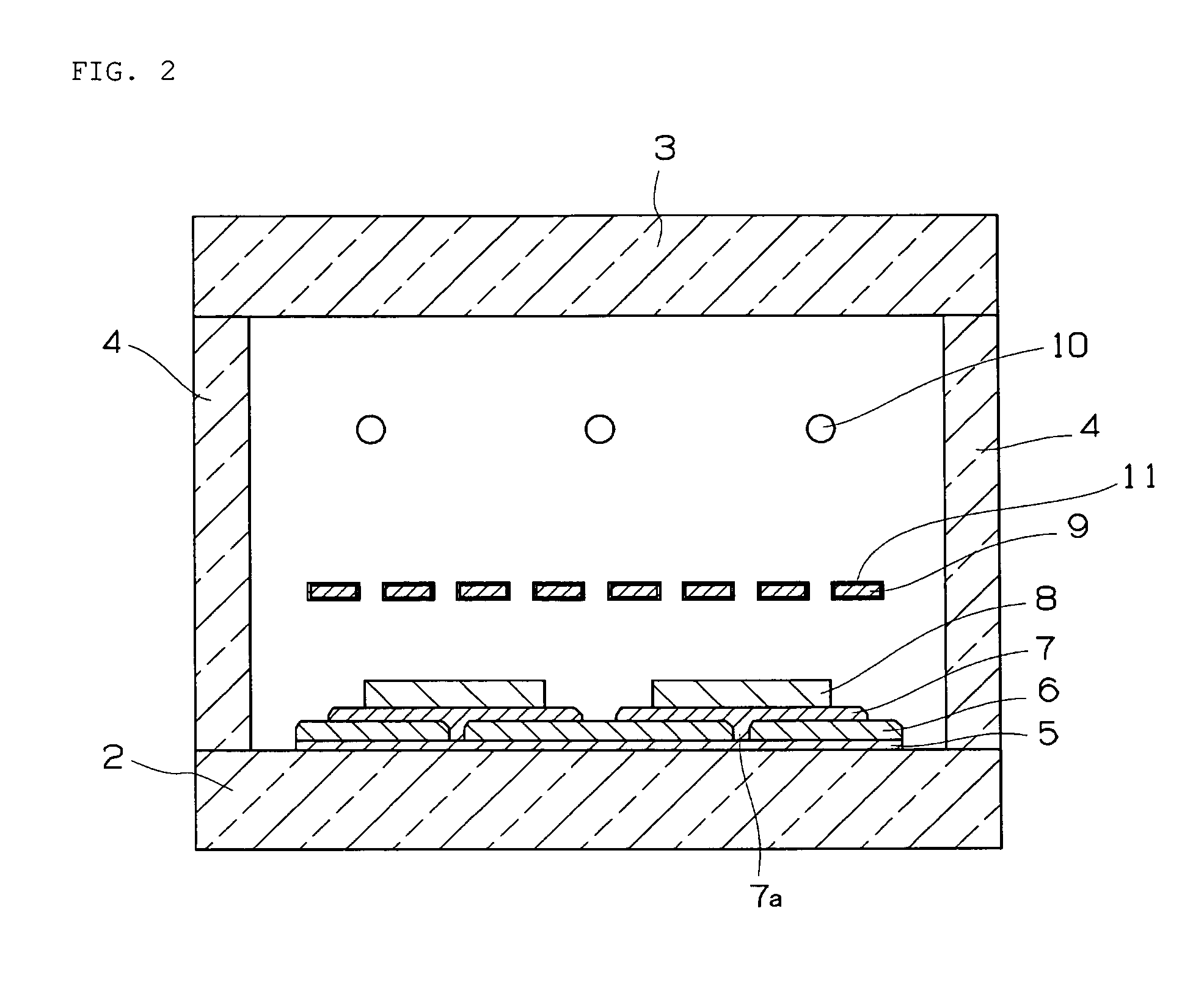Vacuum flourescent display apparatus
- Summary
- Abstract
- Description
- Claims
- Application Information
AI Technical Summary
Benefits of technology
Problems solved by technology
Method used
Image
Examples
example 1
[0080]A description will be given for an example in which an oxide that readily forms a compound with barium is provided on a surface of a mesh-shaped grid electrode (hereafter referred to as a “mesh”).
[0081]Using an organic metal compound made from titanium (Fuji Kagaku Corporation; Hautform RD-Ti), a solution that has been diluted with ethanol so that the titanium oxide concentration is equal to 2 weight percent is prepared in a beaker or a similar glass container. Other than ethanol, the solution can also be diluted with isopropyl alcohol, terpineol, or another organic solvent.
[0082]A mesh, made from alloy 426, to be used for the grid electrode is immersed in the prepared solution. The immersed mesh is extracted, and excess solution remaining on the surface is blown off using a blower so that the mesh is coated by the solution in a uniform manner. The mesh is then dried, thereby causing an organic metal compound made from titanium to adhere to the mesh.
[0083]The mesh, having the ...
examples 2 through 5
[0088]A vacuum fluorescent display apparatus is produced using the same method as that used in the example 1, except that the following organic metal compounds are used on the mesh surface, and subjected to the same evaluation as that for the example 1. The results are shown in Table 1.
[0089]Example 2: An organic metal compound made from zinc (Fuji Kagaku Corporation; Hautform RD-Zn)
[0090]Example 3: An organic metal compound made from tungsten (Fuji Kagaku Corporation; Hautform RD-W)
[0091]Example 4: An organic metal compound made from tin (Fuji Kagaku Corporation; Hautform RD-Sn)
[0092]Example 5: An organic metal compound made from molybdenum (Fuji Kagaku Corporation; Hautform RD-Mo)
example 6
[0102]A vacuum fluorescent display apparatus is produced using the same method as that used in the example 1, except that an oxide made from titanium is formed by sputtering on the grid. The same evaluation as that for the example 1 is performed.
[0103]Sputtering is performed by high-frequency sputtering using a titanium oxide target (Furuuchi Chemical Corp.). Sputtering is performed by draining the chamber of air, then introducing Ar gas and applying an RF power (with a frequency of 13.56 MHz) at 150 W.
[0104]As a result of performing the same evaluation as that for the example 1, it was found that adheringly forming titanium oxide by sputtering results in an effect similar to the example 1 in which titanium oxide is adheringly formed by dipping.
PUM
 Login to View More
Login to View More Abstract
Description
Claims
Application Information
 Login to View More
Login to View More - R&D
- Intellectual Property
- Life Sciences
- Materials
- Tech Scout
- Unparalleled Data Quality
- Higher Quality Content
- 60% Fewer Hallucinations
Browse by: Latest US Patents, China's latest patents, Technical Efficacy Thesaurus, Application Domain, Technology Topic, Popular Technical Reports.
© 2025 PatSnap. All rights reserved.Legal|Privacy policy|Modern Slavery Act Transparency Statement|Sitemap|About US| Contact US: help@patsnap.com



